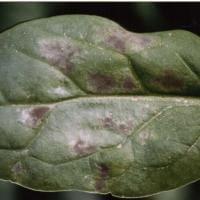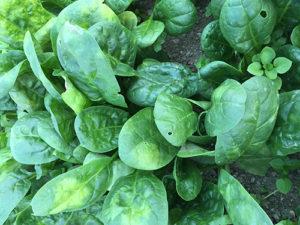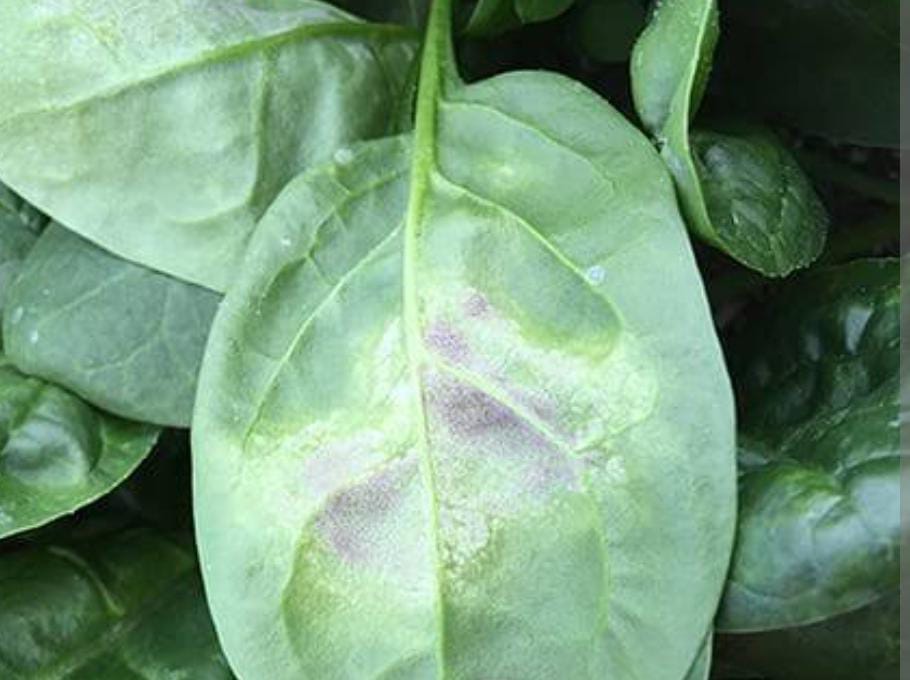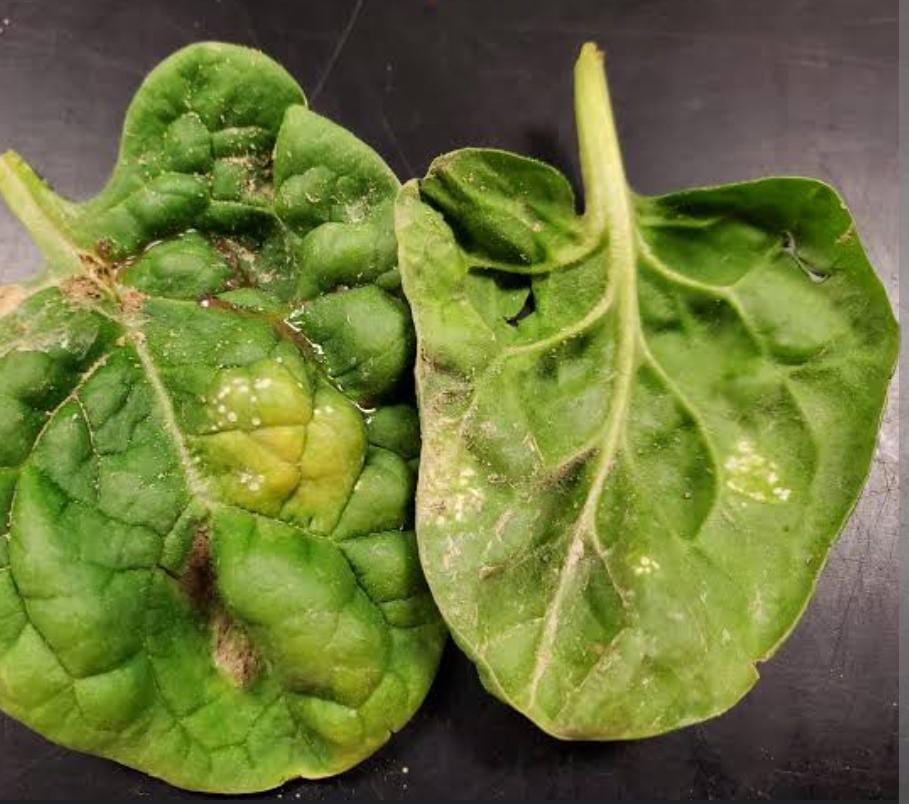Spinach
Spinach is an annual with a height of 6-12 inches, frost-tolerant, and fast-growing. It prefers well-drained, sandy soil in partial shade to full sun. Keep the soil consistently moist. Edible and medicinal.
Habit
Annual
Height
0.2-0.3 m
Growth
Fast
Soil
Well-drained, loamy
Shade
Partial-Full Sun
Moisture
Moist
Edible
Yes
Medicinal
Yes
Origin
Western Asia
Climatic Condition
Temperate, Subtropical
Temperature (°)
5-20°C
Humidity (%)
50-60%
Potting media
Loamy, compost
Fertilizers
Balanced, organic NPK
Watering
Regular
Plant Weight
100-300 g
Flowering Time
Spring, Fall
Soil Ph level
6.0 - 7.0
Water Ph level
6.0 - 7.0
Soil EC
1-2 dS/m
Yield Per Plant
Leafy vegetable
NPK ratio
20:10:10
life Span
Annual
Health Benefits
Nutrient-rich, iron-rich
Suggested Grow Media or Potting Mix ?
50% loam, 25% compost, 25% sand
Suggested Fertigation/Fertilizers
Fertilize every 4 weeks with a balanced fertilizer.
Common Diseases and Remedies
Downy mildew , Anthracnose
Dark brown spots on leaves , Reddish spots on leaves
Cow urine , Bordeaux mixture
HEALTH BENEFITS
· High in iron, folate, and vitamins A, C, and K.
· Supports heart health and improves blood circulation.
· Contains lutein and zeaxanthin for eye health.
· Aids digestion due to its high fiber content.
What is Spinach
Spinach (Spinacia oleracea) is a green leafy plant native to Central and West Asia. It belongs to the Caryophyllales, Amaranthaceae, and Chenopodinae subfamily. Its leaves are a common edible vegetable and are consumed raw or after preservation using preservation techniques such as canning, freezing, or drying. It can be eaten cooked or raw, but the taste varies greatly. High oxalate content can be reduced by steaming.
What Are The Different Types Of Spinach
Bloomsdale Longstanding
is an older variety and one of the best tasting, but not disease resistant. ...
Melody
is an All-America Selection winner (1977) with delicate, dark green, slightly wavy leaves and excellent flavor.
How To Care For Spinach
Location
Spinach is originally from Central Asia, probably Persia (Iran). Spinach (Spinacia oleracea L.) belongs to the Chenopodiaceae family. Spinach is an annual plant for leaf production and a biennial plant for seed production.
Sunlight
Soil Type and Preparation - Well-drained soil rich in organic matter such as compost or composted manure. pH value is 6.5-7. Germination temperature is – 10 °C to 22 °C. Sunlight – Full sun to partial shade. Water – Spinach grows best in colder months, so be careful not to overwater it. pH value is 6.5-7. Germination temperature is – 10 °C to 22 °C. Sunlight – Full sun to partial shade. Water – Spinach grows best in colder months, so be careful not to overwater it. Spinach is also a good source of iron. Iron is important for transporting oxygen throughout the body and keeping your immune system healthy.
Nourishment
Decoding the N-P-K Ratio for Spinach Success In spinach, nitrogen is the main issue - after all, it's all about the leaves. A balanced mix like 10-10-10 is a good choice, but you can increase the nitrogen if your soil test says "go for it."
Issues
Mildew.
Anthrax.Cladosporium leaf spot.
Stemphyllium leaf spots.
Rot and root rot.
What Are The Benefits Of Spinach
Spinach is rich in iron, vitamins C and E, potassium and magnesium. As part of a nutrient-rich diet, it supports immune function, aids the digestive system, and may even have anti-cancer properties.
FAQs About Growing Spinach
What does spinach do for your body?
Spinach is rich in minerals needed by the body, including potassium. Eating foods rich in potassium can lower blood pressure. Spinach is a good source of lutein, an antioxidant known to protect against age-related eye diseases such as macular degeneration and cataracts.
Does it make sense to eat spinach every day?
What's wrong with spinach? Eating excessive amounts (more than a bowl) of spinach every day can have negative effects on your health. Due to their high fiber content, they are the most common cause of gas, bloating, and cramps. Eating too much spinach can affect your body's ability to absorb nutrients.
Is raw or cooked spinach better?
Raw spinach is rich in fiber, but cooked spinach may provide more beta-carotene. One study found that the antioxidant beta-carotene, a type of vitamin A, was absorbed three times more from cooked spinach compared to raw spinach. became. "Both types of meal preparation have advantages and disadvantages," says Dr.
Is it okay to eat raw spinach?
While it's good to eat spinach raw, researchers say it's better to chop it in a blender (for things like smoothies) or a juicer, as the leaves release more lutein. If you're adding spinach to a salad or sandwich, you can get the same effect by cutting it into strips. 1. April 2019
Are palak and spinach the same?
Yes, they essentially mean the same thing. Palak means spinach in Hindi. However, in the United States there is a common spinach with large stalks, which is used primarily in salads. Baby spinach is used to make dishes like palak paneer, aloo palak etc. March 17, 2019



